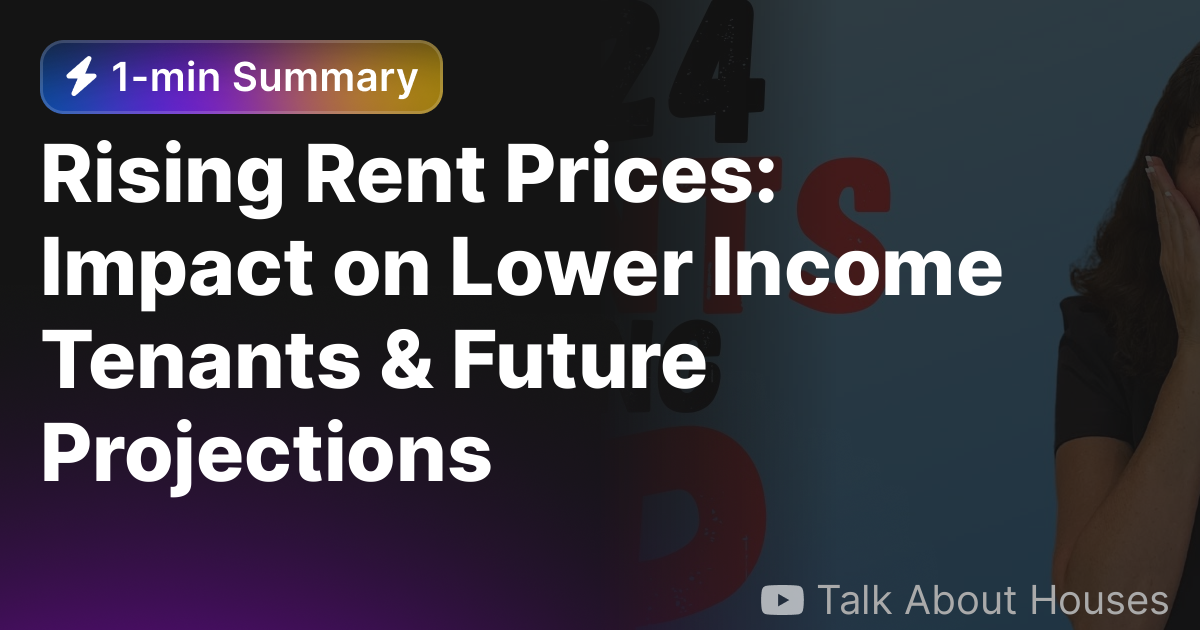
The Impact of Rising Rent Prices on Tenants
Imagine, each month, a significant chunk of your paycheck vanishing before you even get a chance to dream about what to do with it. For a growing number of people, this isn’t a dystopian scenario – it’s the harsh reality faced every time rent is due. Rising rent prices are more than just a fleeting concern; they’re a persistent issue that reshapes how tenants live their lives.
Strained Budgets and Financial Stress
When rent goes up, the first and most obvious consequence for tenants is the increased financial burden. The general recommendation is to spend no more than 30% of your income on housing. But in many cities across the globe, tenants now find themselves forking out 40%, 50%, or even more of their hard-earned money simply to keep a roof over their heads.
This financial strain isn’t just about having less cash for other expenses; it’s about being cinched tightly by the belt of rent commitments, leaving less room to breathe for other necessities such as food, transportation, and health care. When much of your income goes into your landlord’s pocket, savings accounts shrink, and sometimes disappear altogether, rendering any thoughts of financial security or investments a distant dream.
Lifestyle Adjustments and Reduced Quality of Life
As rents climb, tenants often have to make tough choices. This may mean moving to less desirable neighborhoods to find more affordable housing. Others may compromise on the quality of their living spaces, accepting smaller, less equipped, and sometimes less safe homes just to make ends meet.
These changes can impact everything from commute times to work, to access to quality education and safe recreational spaces. The consequence? A reduced quality of life and an increase in daily stressors, which can take a serious toll on both physical and mental health.
Rising Housing Instability and Displacement
An unfortunate byproduct of soaring rental costs is increased housing instability. Renters may find themselves hopping from one lease to another as landlords seek more lucrative deals, or they may be pushed out of gentrifying neighborhoods where they once lived comfortably.
This transience disrupts communities and can have a detrimental effect on social cohesion. As families and individuals are displaced, they lose connections with their communities, schools, and support networks. This challenge is especially pronounced for lower-income renters who find it increasingly difficult to find affordable housing in a market that seems to cater more to the high earners.
Workforce Challenges and Commuting Nightmares
Every city needs a diverse workforce, including teachers, firefighters, retail employees, and many others who earn moderate incomes. As these vital community members are priced out of their neighborhoods, they move farther away in search of affordability. This leads to longer commute times and increased traffic congestion, with cascading effects on physical health due to the stress of travel and environmental impacts from increased emissions.
Moreover, local businesses often struggle to retain employees who can no longer afford to live near their workplaces, potentially leading to labor shortages and reduced economic vitality in communities where the cost of living isn’t aligned with the wages offered.
The Psychological Toll of Housing Uncertainty
We must not overlook the psychological impact that rising rent prices can have. Uncertainty about the future, the feeling of a lack of control over one’s living situation, and the constant concern about potential eviction can create a persistent state of anxiety and stress for tenants. This emotional burden can contribute to a range of long-term health concerns and significantly impact overall well-being.
Beyond the individual, the mental health implications of rent stress can have reverberating effects throughout communities, influencing levels of social engagement and civic participation. As individuals become preoccupied with their housing challenges, they have less energy and motivation to involve themselves in communal activities, further eroding the social fabric of neighborhoods.
Conclusion: A Call for Action and Understanding
The narrative of rising rent prices is a complex one with deep-rooted implications for individuals, families, and broader society. It’s a tale that reflects economic disparities and calls into question the sustainability of our current housing models.
With climbing rents, we risk creating a divide that hinders social mobility and exacerbates economic inequality. As such, it’s crucial that policymakers, landlords, and community leaders work together to develop strategies that ensure affordable housing options are accessible to all members of society. This might involve strengthening tenant protection laws, investing in affordable housing developments, or offering subsidies and incentives for low to moderate-income renters.
To those bearing the brunt of this housing crunch: it’s essential to stay informed on tenancy rights, engage in community action, and seek financial advice where possible. For landlords and investors, the conversation leads to a deeper understanding of the impacts their rental price decisions have on the fabric of the societies they are a part of.
The story doesn’t have to be one of stress and instability. With awareness, cooperation, and strategic action, communities can rewrite the script to ensure that affordable housing isn’t a luxury, but a foundation for thriving, lively neighborhoods. After all, a home is more than just a place to rest; it is the cornerstone of stability, comfort, and ultimately, the springboard from which all of us can hope to reach our greatest potential.